
![]()
What is Rolfing?
Rolfing Structural Integration is a system of bodywork and movement education that reorganizes the entire body in gravity. By manipulating the 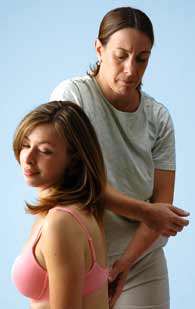 network of muscle and fascia in the body, a Rolfer assists an individual through a gradual process of making profound changes in posture and structural alignment.
network of muscle and fascia in the body, a Rolfer assists an individual through a gradual process of making profound changes in posture and structural alignment.
Who Seeks Rolfing?
Most people seek Rolfing to reduce pain and discomfort in their bodies. Rolfing can be successful in assisting people who are experiencing lingering pain due to:
- Falls, sports-related injuries and other physical trauma
- Repetitive stress injuries (carpal tunnel syndrome, plantar fasciitis, tennis elbow)
- Back injuries
- Changes which occurred during pregnancy and delivery
- Longer periods of inactivity in our lives as we work, raise children and age
- Auto accident injuries
- Stiffness and misalignment that remain after surgical procedures, including knee, back, hip and shoulder surgery
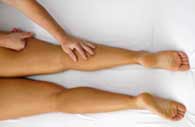 What Happens in a Rolfing Session?
What Happens in a Rolfing Session?
Your 1st Rolfing session begins with an opportunity for you and your Rolfer to discuss your health history and specific goals that you hope to address with structural integration methods. The Rolfer will then ask you to disrobe to your underwear or bathing suit and perform a visual analysis of your existing postural alignment. A set of pre-session photos may be taken and then you will lie down to receive your bodywork session.

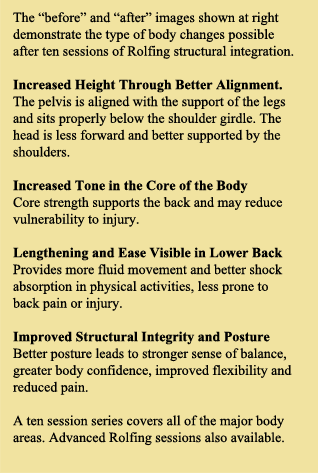
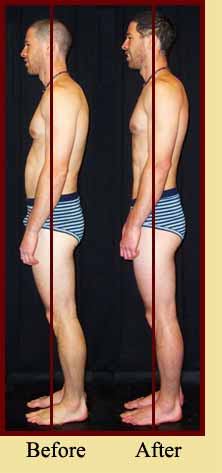
Interactive Sessions Aid Alignment and Movement
Although each session is structured to address only particular areas of your body, your Rolfer is continually thinking about how the work of the session will affect alignment and movement throughout your body. Sessions are generally interactive and your Rolfer may ask you to perform isolated movements or to provide specific feedback regarding your awareness of ongoing changes in your fascia. Post-session photos may be taken throughout the series to track your progress, however, they are not required.
Does Rolfing Hurt?
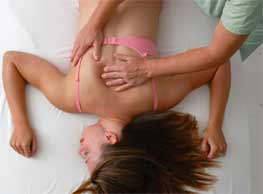
Rolfing may be uncomfortable at times, but should not hurt. Your Rolfer will work with you to find a threshhold that challenges your soft tissue, but is not painful to the point which you hold your breath or tense up other body parts to accomodate the work.
You may experience sensations of stretching or a mild burning as the fascia is remodeled. Most individuals ultimately experience it to be a welcome and relaxing form of soft tissue manipulation.
Benefits of Rolfing - See More Info »
Note: Rolfing is not a substitute for appropriate medical care and/or physical therapy associated with injury. Clients are encouraged to seek the advice of their physician regarding acute injury or unusual changes in health.
Copyright © 2010 - 2025 White Oak Rolfing. All Rights Reserved.